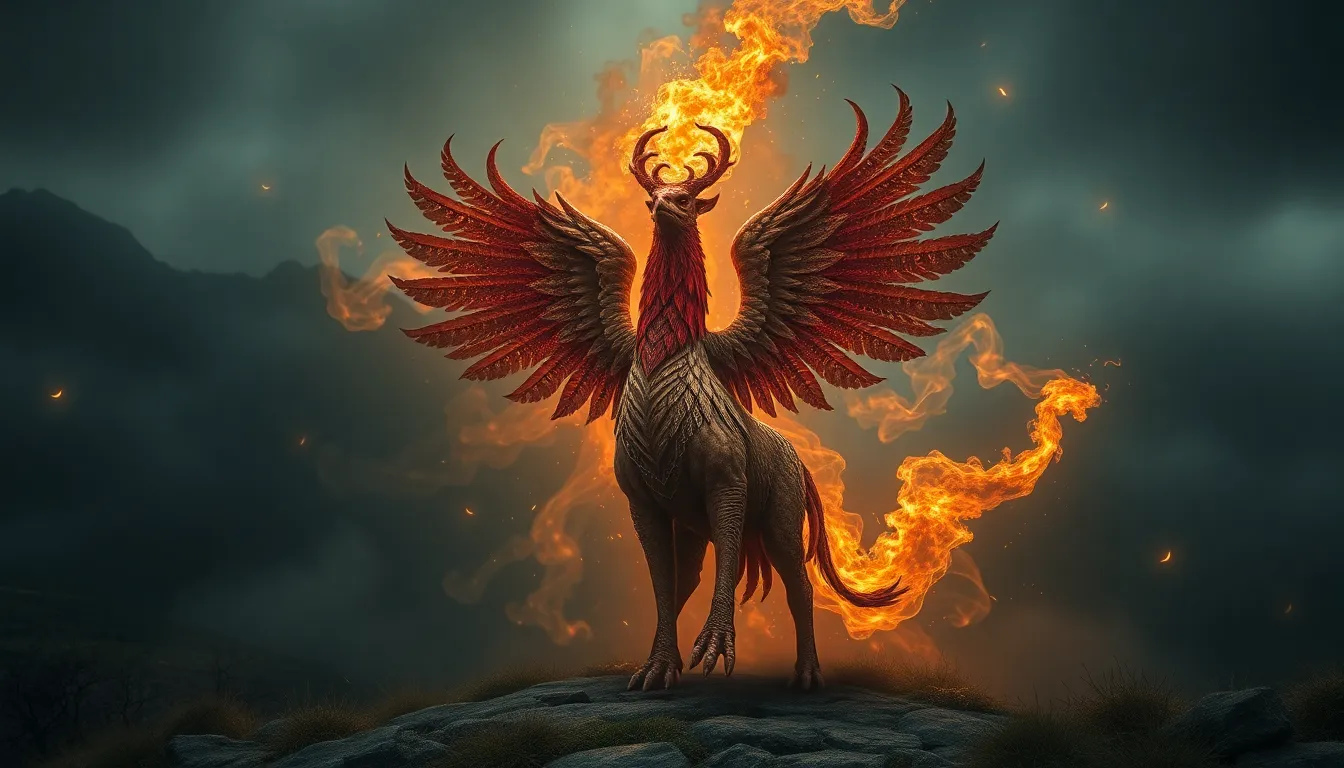The Simurgh in Central Asian Folklore: Exploring its Cross-Cultural Influence
I. Introduction
The Simurgh is a mythical bird of enormous size, often depicted as a benevolent creature possessing immense wisdom and mystical powers. In Central Asian folklore, it serves as a powerful symbol that transcends boundaries of culture and time, reflecting the rich tapestry of human experience and belief. The significance of the Simurgh within this context offers a unique lens through which to explore themes of wisdom, healing, and the interconnectedness of life.
This article aims to delve into the historical background, cultural symbolism, and contemporary relevance of the Simurgh, highlighting its enduring legacy in Central Asian folklore and its cross-cultural influence across various societies.
II. Historical Background of the Simurgh
A. Origins of the Simurgh in ancient texts
The origins of the Simurgh can be traced back to ancient Iranian mythology, where it first appears in the Avesta, the sacred texts of Zoroastrianism. This majestic bird is often associated with the divine, serving as a guardian of the tree of life and representing the connection between the earthly and celestial realms.
B. Evolution of the Simurgh figure through different cultures
As the Simurgh spread across regions, its depiction evolved, incorporating elements from various cultures. In Persian folklore, the Simurgh became a symbol of stability and nurturing, while in Turkic cultures, it was associated with the sky and considered a messenger of the gods.
C. Key historical texts featuring the Simurgh
- The Avesta
- The Shahnameh (Book of Kings) by Ferdowsi
- The Conference of the Birds by Attar
III. The Simurgh’s Symbolism and Attributes
A. Characteristics of the Simurgh in folklore
The Simurgh is often described as a bird with the head of a dog, the body of a peacock, and the wings of an eagle. This unique combination symbolizes its multifaceted nature, representing both earthly and heavenly qualities.
B. Symbolism associated with the Simurgh (wisdom, healing, etc.)
The Simurgh embodies several important symbols, including:
- Wisdom: The Simurgh is often seen as a source of knowledge and enlightenment.
- Healing: It is believed to possess the power to cure ailments and restore well-being.
- Unity: The bird symbolizes the unity of diverse cultures and beliefs.
C. Comparison with other mythological birds in global cultures
In examining the Simurgh, one can find parallels with other mythical birds such as:
- Phoenix: Represents rebirth and immortality in various cultures.
- Garuda: A bird-like creature in Hindu mythology, symbolizing strength and power.
- Roc: A giant bird in Arabian mythology, known for its immense size and strength.
IV. The Simurgh in Persian Literature
A. Analysis of the Simurgh in “Shahnameh” (Book of Kings)
In the “Shahnameh,” the Simurgh plays a crucial role as a mentor and guide to the hero Zal. When Zal is abandoned as a child, the Simurgh rescues and nurtures him, symbolizing divine intervention and care.
B. Role in the stories of Persian poets (e.g., Attar, Rumi)
Persian poets such as Attar and Rumi have also drawn upon the imagery of the Simurgh in their works. In “The Conference of the Birds,” Attar uses the Simurgh as a symbol of the divine truth sought by the birds on their spiritual journey. Rumi similarly incorporates the bird’s characteristics to illustrate the soul’s quest for God.
C. Themes of divinity and guidance
The recurring themes of divinity, guidance, and transformation associated with the Simurgh highlight its role as a spiritual guide, leading individuals toward enlightenment and self-discovery.
V. Cross-Cultural Parallels and Influences
A. The Simurgh in neighboring cultures (e.g., Turkic, Arab)
The Simurgh’s influence extends beyond Persian culture into neighboring Turkic and Arab traditions, where it appears in various forms and narratives, often retaining its symbolic meanings of wisdom and protection.
B. Comparative analysis with mythical creatures such as the Phoenix and Garuda
Through a comparative lens, the Simurgh shares thematic similarities with the Phoenix and Garuda. Each bird embodies qualities of transformation, divine connection, and the intersection of the earthly and spiritual realms.
C. Influence of the Simurgh on modern literature and arts
In contemporary literature and arts, the Simurgh continues to inspire creators, appearing in novels, paintings, and performances. Its symbolism resonates with themes of identity, unity, and the quest for knowledge in a rapidly changing world.
VI. The Simurgh in Contemporary Central Asian Identity
A. Relevance of the Simurgh in modern folklore and storytelling
In modern Central Asian societies, the Simurgh remains a potent symbol in folklore and storytelling. It serves as a reminder of cultural heritage and the shared narratives that bind communities together.
B. The Simurgh as a symbol of unity and cultural heritage
The bird embodies the unity of diverse ethnicities and cultures within Central Asia, promoting a sense of belonging and shared identity among its people.
C. Representation in contemporary art and media
Artists and filmmakers increasingly reference the Simurgh in their works, using its imagery to explore themes of resilience, hope, and the human experience in the face of adversity.
VII. The Simurgh’s Role in Spiritual and Philosophical Contexts
A. The Simurgh in Sufism and spiritual symbolism
Within Sufi philosophy, the Simurgh represents the soul’s journey toward God. The bird’s ascent is seen as a metaphor for the spiritual path, where the seeker must transcend worldly attachments to achieve divine union.
B. Philosophical interpretations of the Simurgh’s journey
The narrative of the Simurgh often reflects the philosophical quest for self-knowledge and realization. It emphasizes the importance of inner growth and the pursuit of truth.
C. Lessons and moral teachings derived from Simurgh stories
Stories of the Simurgh impart valuable lessons about compassion, wisdom, and the interconnectedness of all beings, encouraging individuals to seek their own paths toward enlightenment.
VIII. Conclusion
In summary, the Simurgh holds a significant place in Central Asian folklore, serving as a powerful symbol of wisdom, healing, and unity across cultures. Its enduring influence is reflected in literature, art, and contemporary identity, reinforcing the importance of shared narratives in fostering cultural heritage.
As we continue to explore the legacy of the Simurgh, it is essential to recognize its role in shaping not only Central Asian identity but also its cross-cultural connections that resonate globally. Future research into the Simurgh can unveil even deeper insights into its multifaceted significance, fostering a greater understanding of the rich tapestry of human mythology and the universal themes that unite us.



